Growth Hacking: A Beginner's Guide
Growth hacking is a common term among marketers and startups. It refers to using creative and cost-effective techniques to grow brand awareness and user base, especially for companies with tight budgets.
In this blog post, we'll explain how growth hacking works and explore growth hacking techniques that enable companies and marketers to grow quickly and cost-effectively. This will provide a comprehensive framework for applying growth hacking techniques in your business and marketing efforts.
What is Growth Hacking?
The primary goal of growth hacking is to focus on growth. To this end, the customer base is constantly being expanded with new ideas and tests. When new ideas and tests result in positive growth, they are scaled and iterated for a while.
Sean Ellis, a startup consultant and entrepreneur who founded the GrowthHackers community, coined the term growth hacking in 2010. Sean Ellis defines growth hacking as ways of customer acquisition and engagement that are differentiated from traditional, testable, trackable, and scalable.
Although growth hacking is seen by many as fast growth with small budgets, it refers to marketing techniques that aim for fast and low-cost growth.
Continuous Testing and Iteration
Experimentation is at the heart of growth hacking. This usually involves running many tests at the same time and observing which ones work best on a small scale. The tactic that works best can then be integrated into long-term marketing strategies.
Example: Using A/B Testing to Increase Engagement in a New E-commerce Startup
Consider a new e-commerce initiative. They want to build their customer base and gain early sales momentum. However, the marketing team is not sure how to go about finding offers that will attract potential customers. They decide to run an A/B test to find the best offer.
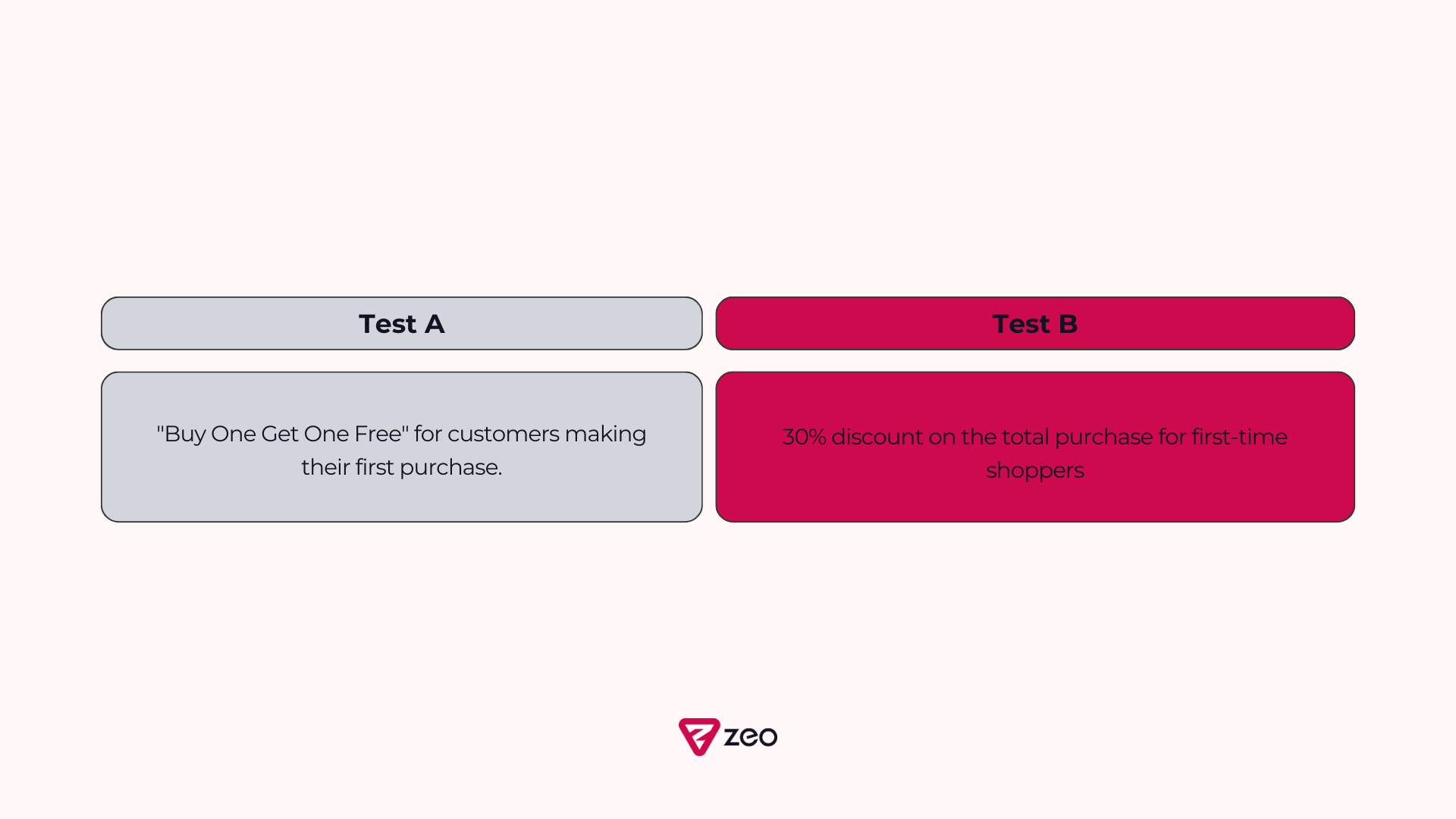
The marketing team presents both offers to similar demographics and tracks the results. Offer B, which offers a direct discount, generates a higher conversion rate and sales, especially among price-sensitive prospects.
This process is called A/B testing or split testing, and it allows you to see which offer has a stronger impact. Businesses that invest in the offer with the most effective result can develop their marketing and sales strategies accordingly and use the winning offer as a variant in their next test.
Growth Hacking vs Digital Marketing
Both digital marketing and growth hacking aim to help businesses grow, but they take different approaches.
While digital marketing harnesses the power of digital media to promote products or services, growth hacking focuses on creative and low-cost strategies for rapid growth. Growth hacking can be considered a subset of digital marketing.
Not all digital marketing techniques may yield beneficial results for growth hacking. For example, SEO is a long-term endeavor, so it may not be entirely beneficial for growth hacking. Instead, methods that can get effective results in a shorter time are applied in growth hacking.
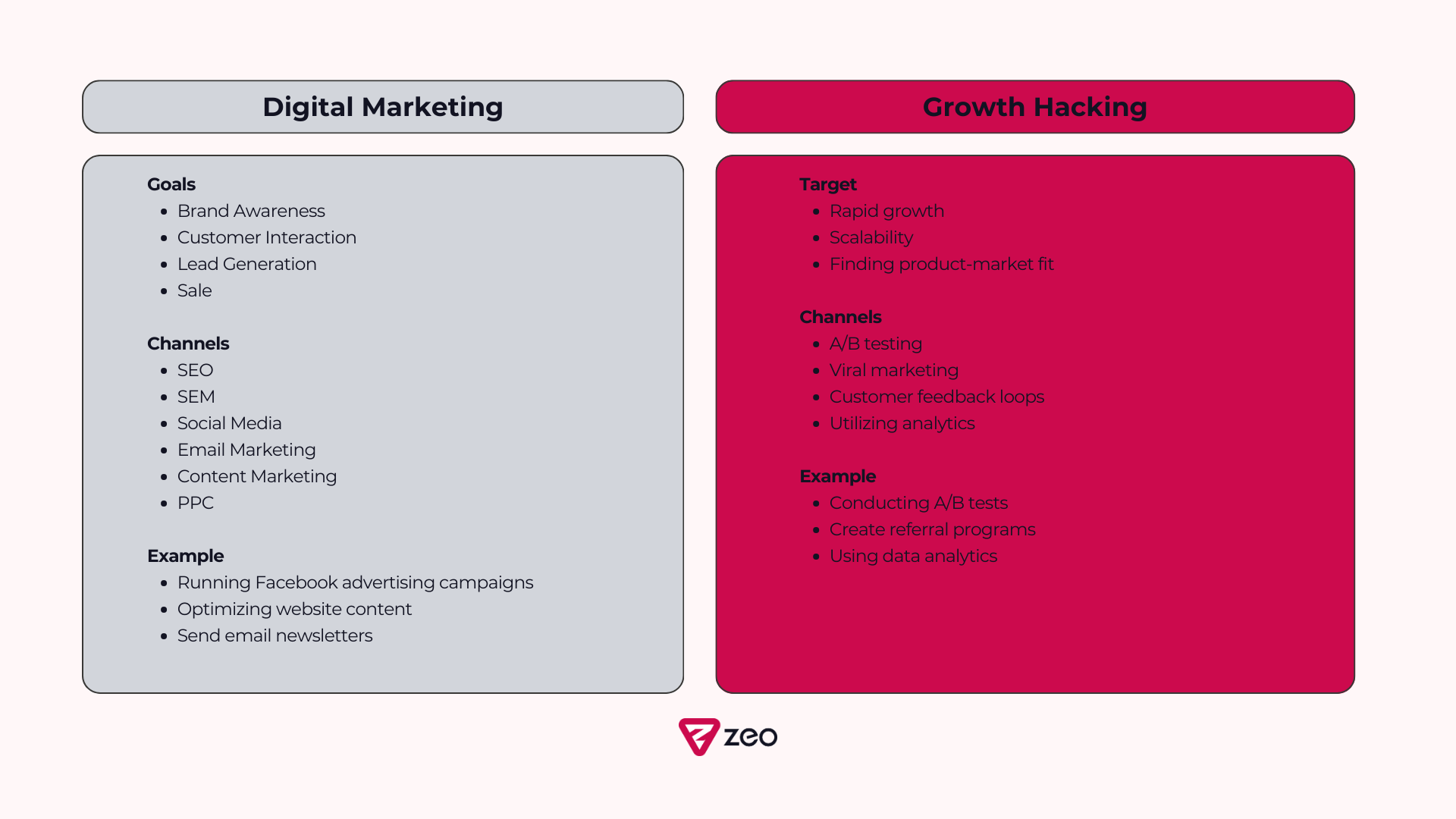
For example, let's consider a cosmetics brand looking to capitalize on partnership and collaboration campaigns. This brand aims to gain a foothold in the market quickly and is considering launching a collaboration campaign with two different groups of influencers:
Collaboration A: Focus on the power of the brand's products by collaborating with a makeup artist known for her in-depth tutorials on Instagram.
Collaboration B: Working with a popular skincare YouTuber on YouTube to focus on the health and wellness aspect of the product line and emphasize a personal care routine.
The brand tracks the results from the two different collaborations through metrics such as clicks and sales. The collaboration that generates the most significant growth in terms of sales and brand visibility can then be scaled and improved.
This example highlights a partnership-driven method that is better suited to the rapid growth goals of growth hacking rather than long-term strategies.
How Growth Hacking Can Help Your Business
Growth hacking can bring many benefits to your business. The most basic of these:
Cost-effectiveness: By applying creative tactics, growth can be achieved without high investments.
Data-Driven Decision Making: Thanks to the growth hacking technique, which involves a lot of trial and error, marketing strategies can be determined with insights obtained from data.
Minimum Labor Force: Growth hacking is based on small tests. If there is no possibility to use a lot of resources, you can start with a small team.
Fast Adapting: After scaling marketing strategies quickly, it is easier to adapt to changing market conditions by reacting more quickly.
For example, startups often have limited resources. They need to gain brand visibility and grow with this limited resource. Growth hacking techniques can help them gain visibility without high investments.
Building the Growth Hacking Framework
Growth hacking by its very nature involves a lot of trial and error. Every business's growth hacking process is unique. There are steps that all brands should follow on their growth journey.
1. Setting Goals
In the first step, determine which type of growth you are targeting. For example, user registration growth, traffic growth, or conversions.
Setting a goal will guide your growth hacking efforts. It's critical for focusing your strategies and measuring success. Once you know what you're aiming for, you can focus on how to get there, what you need to measure effectiveness, and so on.
2. Generating Ideas
As a growth hacking team, frequent brainstorming meetings are important for new ideas. At this point, if possible, people with different perspectives and areas of expertise should be included in this team. In this way, everyone in the team can improve the suggestions presented.
During these meetings, you can go over the successes achieved in the past and determine your new growth hacking strategy based on the source of this success.
For example, imagine that you have organized an important discount campaign for your existing customers with good results. Based on this, you planned a "Mega Sale Weekend" and announced it with email marketing and social media ads. This approach builds on the proven strategy of flash selling and scales it with a multi-channel promotion strategy to reach a wider audience and increase revenue.
3. Identifying KPIs
Identifying key performance indicators (KPIs) that align with your growth objectives is critical to assessing your progress.
Let's take an example. You have a goal to increase customer retention. You can focus on metrics such as repeat purchases and customer lifetime value (CLV).
To determine the success of growth hacking, let's say you set a repeat purchase rate of 20% and an average CLV of 30% for the next quarter. These goals give you concrete values to achieve and clarity to track progress.
4. Creating and Managing Campaigns
Build the resources you need to turn your ideas into concrete actions, launch your campaign, and see it through to the end. You can do this in six steps:
1. Planning the Customer Journey: To implement your growth hacking strategy, you need to plan the prospect's journey. This can include touchpoints on a social media channel and the registration process for a webinar series.
2. Identify Resources: Identify the budget, time, and talent required for your growth hacking strategy. This could be assigning tasks to people, buying equipment, or outsourcing.
3. Identify Your Assets: Create the necessary content to grab your audience's attention and take them through the planned customer journey. This could be crafting your social media content, designing your landing pages, or creating a signup form.
4. Launch Your Strategy: Once your campaign is launched, follow the process closely to analyze the outcome according to your engagement and growth goals.
5. Analyzing the Results: In this step, you need to keep a close eye on your campaign's performance, measure how well it performs on the predefined metrics for each step, and analyze all the data you get.
For example, if your focus is on a pay-per-click (PPC) campaign, your primary insights will come from the advertising platform. Here you can find data such as click-through rates, cost per acquisition, etc. For content-driven strategies, such as a blog series or SEO efforts, a platform like Google Analytics will allow you to examine traffic sources, time on site, and page views.
By analyzing campaign-specific metrics, you can understand where your campaign was successful and where it needs to be reworked, and gain insights for your next growth hacking strategy.
6. Refinement and Repetition: Based on data analysis, optimize the parts of your strategies that are not aligned with your goals. This optimization is a key component of the iterative method of growth hacking. It may take multiple iterations to get an accurate result. As you gain more insights from each campaign, you can make incremental improvements and incorporate them into your next strategy. Once you find the right strategy, you need to scale it. For example, if a product promotion on one social media channel leads to an increase in interactions, you can replicate this success with similar promotions on other channels.
6 Growth Hacking Techniques for Small Businesses and Startups
Let's look at six key growth hacking techniques that can benefit small businesses and startups:
Content Marketing with SEO: Content marketing with SEO helps businesses drive organic traffic by providing content that ranks high on search engine results pages (SERPs). This strategy involves extensive keyword research, creating quality content, and optimizing it for search engines. A blog post that provides industry insights or answers existing problems can establish your brand as a thought leader. By aligning content with the queries and needs of the target audience, you can increase your visibility and have a highly engaged audience.
User Generated Content: User-generated content allows you to create a user experience on social channels and engage with your audience. Encouraging customers to share their own experiences with a product or service can strengthen brand messaging and presence. For example, a campaign that encourages users to share their own "before and after" photos using a skincare product can foster community and create brand ambassadors. This method allows for low-cost content generation while building trust with potential customers through real testimonials.
Example: Apple #ShotoniPhone
The quality of cell phone cameras is becoming increasingly important. Apple's #ShotoniPhone campaign, launched in 2014, was a groundbreaking campaign among iPhone users and is still going strong. This campaign allows people to showcase the quality of the iPhone camera.

Apple's marketing strategy allowed the iPhone, once notorious for its poor image quality, to regain the trust of its users and demonstrate the impressive power of its camera with real images and videos.
Sweepstakes: Sweepstakes can strengthen your brand presence and expand your customer base. Offering a prize that encourages social sharing can start a chain reaction that gets your brand noticed. Running a digital sweepstakes encourages participants to engage with your brand on social media for a chance to win. This also encourages shares and referrals. Participants can share the giveaway with their immediate circle, significantly growing your audience.
Example: Dove Gorgeous Selfie Contest
In 2018, Dove organized a selfie contest with a grand prize of a spa experience for two.
Facebook users took photos of themselves holding the Dove Beauty Bar and posted them in the comments section of the official giveaway post.
Facebook users also had to nominate a friend to enter the draw.
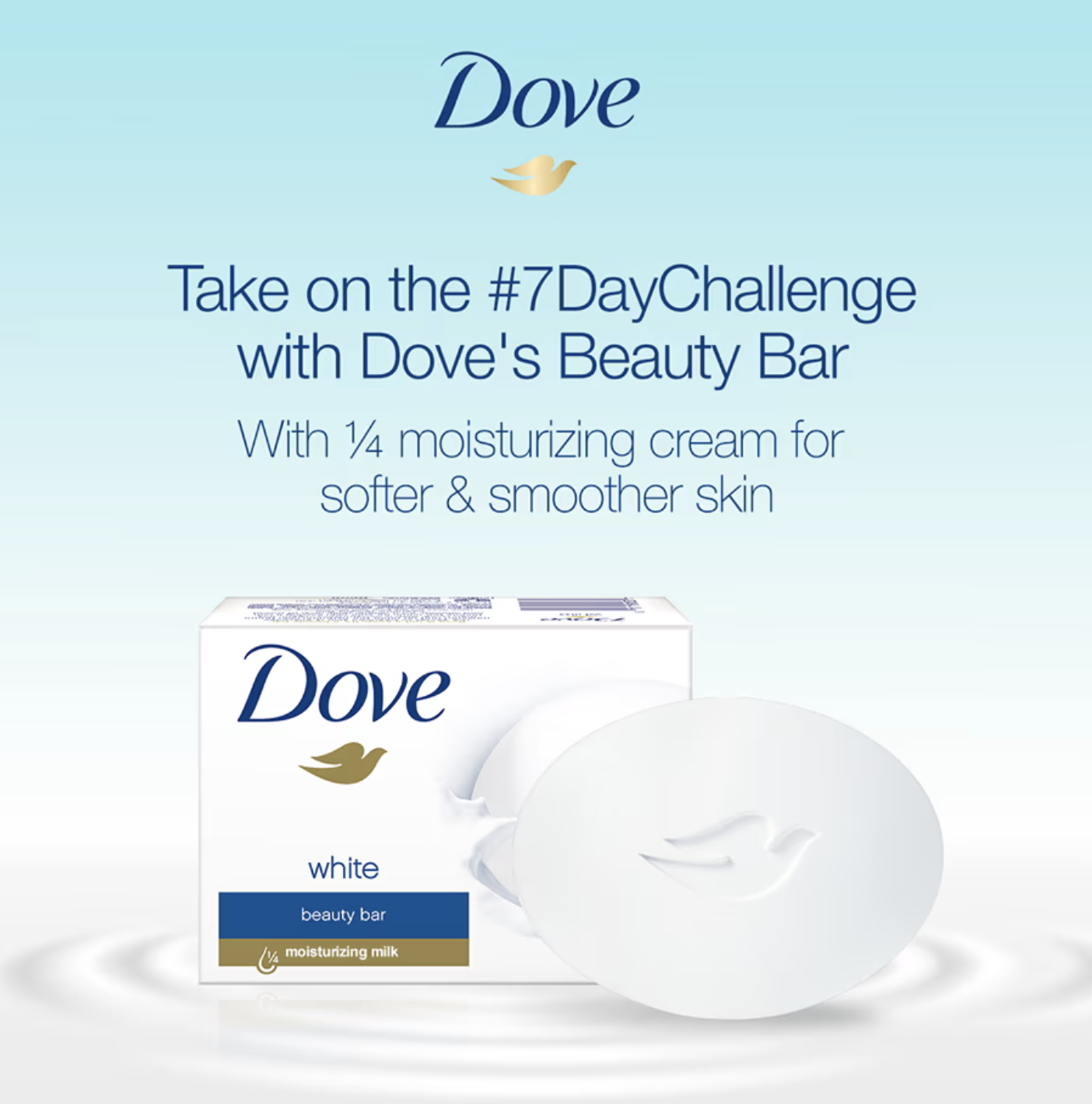
Source: Facebook
This giveaway was simple and effective because it was done through a single post on Facebook. The increase in comments, shares, and likes boosted the post organically on Facebook.
Webinar and Workshop: Webinars and workshops can be an effective way to demonstrate expertise in the field, provide value, and engage directly with potential customers. Organizing free webinars on topics of interest can help you reach many people, some of whom can be converted into customers through follow-up email marketing. These efforts help you engage with your target audience and position your brand as a go-to source for industry knowledge.
Example: Zeo Digitalzone

As Zeo, we have been continuing Digitalzone, the Biggest Digital Marketing Event in Eastern Europe and MENA, since 2017. Every year, we talk about the topics on the agenda and answer questions about SEO and digital marketing with professional speakers and participants from the industry. In this way, we keep our audience up-to-date by closely following the developments in digital marketing. See you at Digitalzone 2024!
Segmented Email Marketing: Segmented email marketing involves segmenting your email list into smaller segments based on specific criteria such as demographics, customer behavior, or purchase history by creating more personalized content. For example, a limited-time discount can be included in emails tailored to a segment of users who abandoned their shopping cart, allowing them to complete the purchase. With segmented email marketing, open rates, click-through rates, and conversions can be increased by creating content that aligns with the interests and behaviors of the audience.
Example: Netflix

Netflix's personalized emails make recommendations and promote new content based on a user's viewing history. Because these emails directly address users' interests, they attract more attention and increase viewership. Netflix's personalization approach shows how powerful the impact of segmented email marketing can be.
Strategic Partnerships: Strategic partnerships with companies that share a similar target audience but are not direct competitors can drive growth because they are mutually beneficial. For example, if a travel company partners with a travel insurance company to offer exclusive packages and content, the companies can cross-promote each other. These partnerships can create a new customer base while sharing the burden of marketing costs and resources.
Growth Hacking Techniques for Big Business
While growth hacking is usually associated with startups or small businesses, large enterprises can also benefit from growth hacking. In large enterprises, growth hacking can be applied in the following situations:
Rebranding: When a business rebrands, it often changes the way it does things. This creates an opportunity for experimentation.
Redefining its Image or Target Audience: If a business wants to change a negative image or appeal to a younger audience, it can start to think more innovatively and take innovative actions.
Launching a New Product: Implementing a growth hacking strategy can be a significant benefit in bringing a new product or service to the forefront.
3 Examples of Growth Hacking with Impact
Many brands have used growth hacking to achieve early success and build momentum. Here are three of them:
LinkedIn's "People You May Know" Feature: LinkedIn has significantly increased user engagement with its "People You May Know" feature. Using an algorithm that suggests connections based on existing network data, the platform made it easier for users to find relevant people and encouraged them to visit the platform more often. As users connected with more people, they effectively grew their LinkedIn accounts and the platform became increasingly popular.
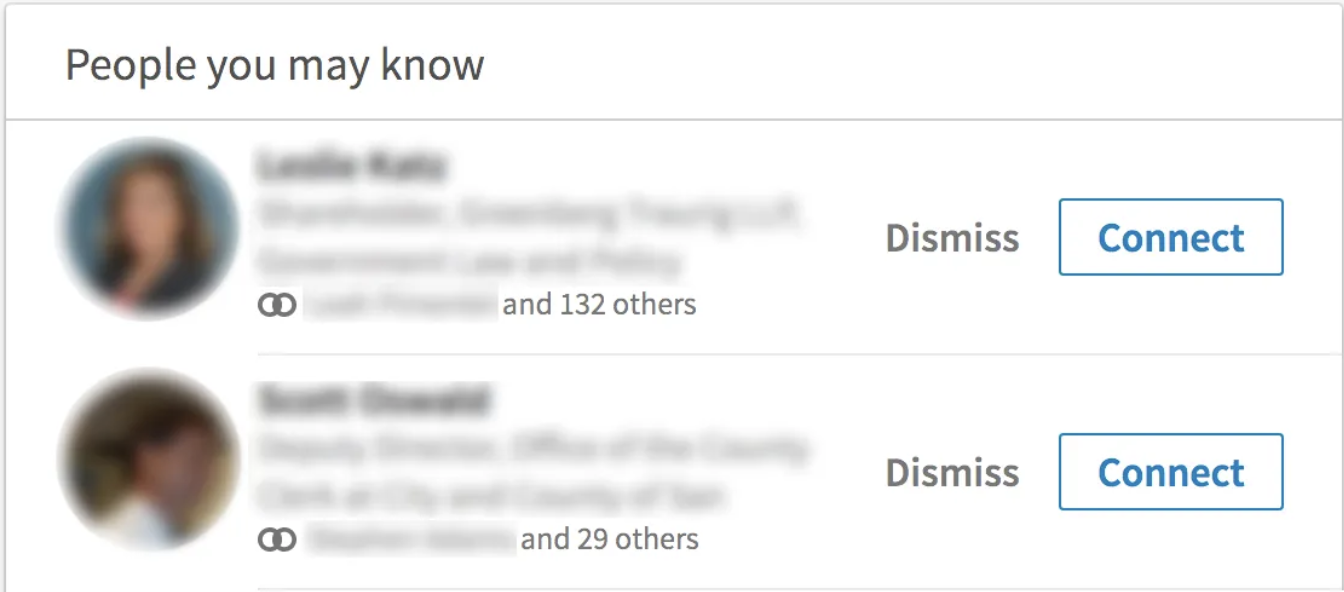
Source: Medium
X New User Process: X, formerly Twitter, redesigned the process when it realized that new users struggled with how to use the platform. By encouraging new users to follow interesting accounts during registration, X ensured that users' feeds were immediately filled with content, increasing the likelihood that they would become active, long-term users. This change reduced the drop-off rate and increased the platform's growth rate.

Source: UserOnboard
Spotify Wrapped: The company's "Wrapped" feature is a section highlighting the most listened-to music and genres throughout the year. It provides information on how many minutes of music you listened to, the artist you listened to the most, the song you listened to the most, and more. Wrapped gains immense popularity among Spotify users every year, with users sharing their results on Instagram and Twitter. Spotify's strategy is a data-driven one. Data such as the number of minutes spent in the app and favorite artists are analyzed to produce personalized results. With this feature, the app saw a 20% increase in downloads in 2020.
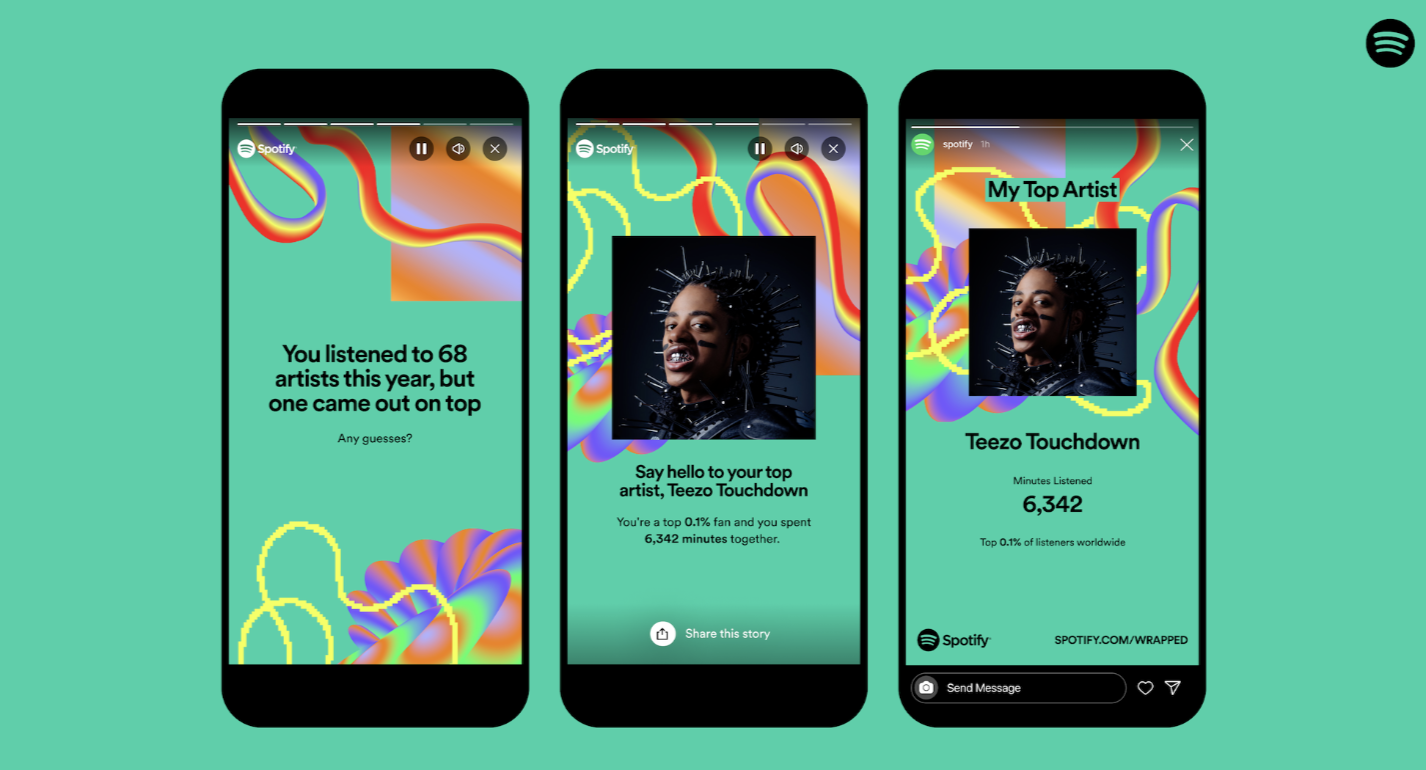
Source: Spotify
These examples show how growth can come from a combination of a deep understanding of audience behavior and innovative thinking.
Conclusion
Growth hacking is an efficient strategy for businesses that want to achieve rapid growth and great success with limited resources. It also plays a critical role for marketers and startups in achieving their goals by providing data-driven and cost-effective methods.
In this blog post, we have discussed in detail how growth hacking works, how to create a roadmap for growth hacking, and how to implement and optimize your strategy.
Growth hacking is a dynamic process and is based on constant experimentation. For this reason, don't forget to continuously analyze and refine your strategies!
Stay tuned to our blog for detailed explanations of growth-oriented methods such as growth hacking!
This content was created by Nursena Küçüksoy, Marketing Specialist at Zeo.
















